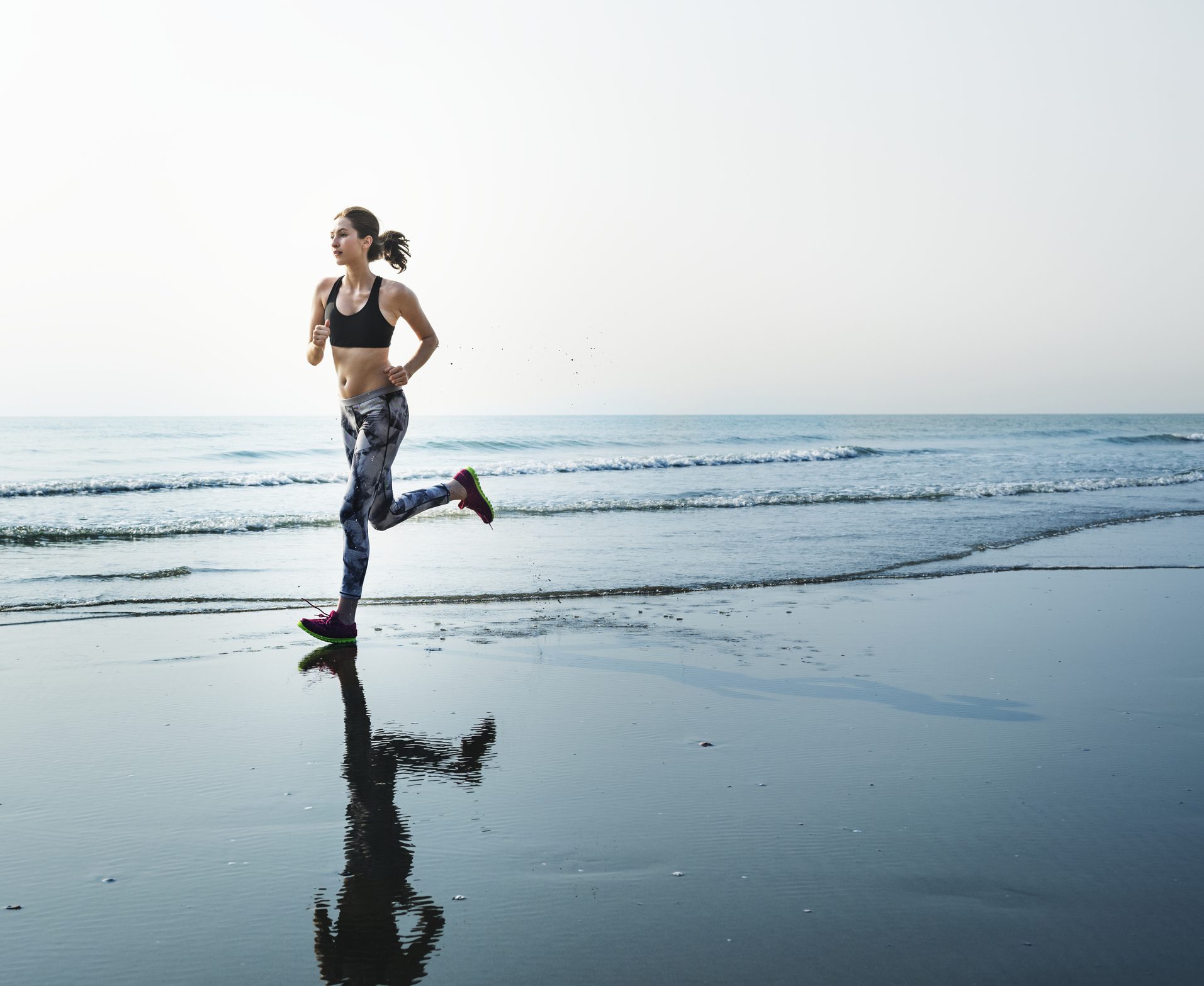The joys and training benefits of beach running
Studies show that running on sand reduces muscular soreness and fatigue.
 Photo by:
Getty Images
Photo by:
Getty Images
It’s typical for triathletes to opt for the familiarity of paved running routes, which is understandable given that roads closely replicate most race-day conditions. But, from time to time, a change of surface provides a different kind of mental and physical stimulus. Running trails is well-documented, but there’s another 100 per cent natural option that offers splendid views, peaceful surroundings and provides unique training benefits: beach running.
Running on sand places less stress on weight-bearing joints including hips, knees and ankles, which can help decrease the risk of impact-associated injuries like stress fractures. Research backs this up. Studies have shown that running on the beach—especially on soft, dry sand that’s typically found further from the water’s edge—will likely lower your odds of impact-associated overuse injuries. In a small 2017 study published in the European Journal of Sport Science, women who ran on soft sand experienced less muscle damage and inflammation than those who ran on grass, and a 2014 study published in the Journal of Sports Sciences concurred, stating that sand running reduced muscular soreness and fatigue.
“With every foot strike, there is almost four times less impact force on soft sand versus firm ground like grass,” says Martyn Binnie, a physiologist at the Western Australian Institute of Sport and coauthor of the 2014 study. “This is a good thing for reducing load through the body. So, when you need a lower-impact session but still want to get in a hard workout, sand is a great option.”
Road and treadmill running are very uni-planar, repetitive exercises, which can lead to muscular imbalances. Often the common weakest links for runners are the glutes, hamstrings, hips, and ankles. By running on sand and challenging your stability, you can build strength in these areas, which can carry over to performance benefits on the road.
While running on soft sand makes you less likely to suffer an impact injury, the chances of other injuries (like a sprained ankle or tendinopathy) do rise because of the uneven surfaces and constantly shifting ground. As long as you exercise caution, though, those two factors can be used to your advantage.
In a 2013 study Binnie also found that running on sand forces your body to work at least 10 per cent harder than on grass. Again, soft loose sand is where you’ll attain the most benefits.
“Firm sand near the water is still about five to 10 per cent softer than grass,” Binnie explained. “[But] if you want the big benefits, you need to aim for the soft stuff.”
When you run on firm ground, less elastic energy – which is stored in your tendons – is absorbed, so you don’t have to work quite as hard. But sand doesn’t provide that favour; instead, it absorbs that energy, meaning you must generate more force with your muscles. Couple that with the fact that your hip and knee-stabilizing muscles are working nearly twice as hard and the result is a higher heart-rate and blood lactate threshold.
Be cautious with sand running. Ease into any new training technique slowly to minimize soreness and reduce injury risk. Always warm up and focus on the posterior chain (calves, hamstrings, glutes), which is activated more on the sand. Go slow and steady. Stretch before and after the run. Because sand is harder to run on, give your body two weeks to adjust before increasing time and intensity. Aim for a pre-determined workout time, not a prescribed distance, and always focus on strict form.
Regarding footwear, some opt to run barefoot. This boils down to personal preference and exactly where you’re running. While staying close to the water, most runners wear shoes to protect their feet from crushed seashells and small rocks, while those in softer areas often go barefoot so sand doesn’t get into their shoes. Keeping shoes on does make an ankle and foot injury less likely because the shoes act as a stabilizer and provide elevated heel and arch support.
How often you hit the sand depends on your personal fitness and goals and, of course, your geographical location. For those who have adequate beaches nearby, once a week makes a lot of sense. Be sure to enjoy the tranquility of such environs: sunsets, birds singing, the lapping of the waves, etc. It inspires meditative practice while getting a sweat on. And don’t forget to consider a dip in the cold ocean or lake to promote healing and prevent post-run soreness, even if it’s just to soak of your legs. It’s an invigorating way to end a session and an open invitation to return.
Kerry Hale is a regular contributor to Triathlon Magazine Canada. This story originally appeared in our May, 2020 issue.
